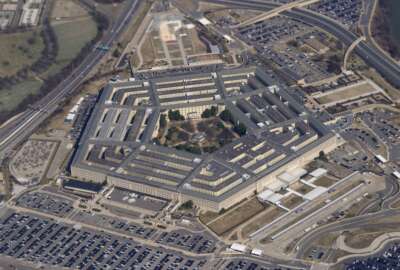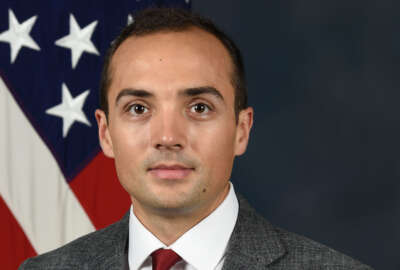Under new plan, DOD aims to cut its cyber workforce vacancy rate in half by 2025
A new cyber workforce strategy outlines four goals aimed at changing the way the DoD manages and trains cyber workers.
The Defense Department’s leaders are calling its new plan to increase its cyber workforce a “paradigm change.” The strategy lays out a detailed set of goals and objectives for identifying, hiring and maintaining its cyber and IT workforce.
The cyber workforce (CWF) strategy implementation plan, released Thursday, outlines the specifics of an action plan for the workforce. It lays out four goals:
- Establish an enterprisewide talent management program;
- Create assessment and analysis processes as force needs to evolve;
- Generate a cultural shift in departmentwide personnel management activities and
- Develop partnerships to enhance capability development, operational effectiveness and career-enhancing experiences.
“I think the biggest change is, this is not business as usual. To address our shortage and keep up with the demand, we must fundamentally change the way we’re doing business,” said Mark Gorak, the DOD chief information officer’s principal director for resources and analysis, at a press briefing Thursday.
The vast workforce includes nearly 225,000 cyber positions for civilians, military and contractor personnel, but nearly a quarter of those positions remain unfilled. The Pentagon introduced the CWF strategy in March, but at that time it lacked details and specifics.
DOD’s cyber workforce has a vacancy rate of about 25% and Gorak said the department expects to use the new plan to reduce the vacancy rate by half over the next two years. The plan lists seven objectives to increase hiring, including recruiting previously untapped or under-represented sources of talent, creating a plan to pair talent with development programs and training pipelines and improving and expanding new employee development programs.
Gorak said new sources of talent needed to be developed to fill out the cyber workforce. He said the total breakdown of the cyber workforce is about 75,000 civilians, 75,000 military and 75,000 contractors.
“On the military side, we actually don’t have a problem recruiting in the cyber workforce because the military provides the training and education to train you in this, and then they provide you the experience. So then the problem is retention. On the civilian side, we have both the recruiting and retention challenges,” Gorak said.
Although the strategy is intended to guide the force through 2027, Gorak said the plan is meant to be fluid and adaptable as the needs of the department change.
The plan states not all workers will need to be in the office, and there will be opportunities for both hybrid and remote work. The plan also calls for development of a “cyber workforce development fund” to accelerate the process of training and implementing CWF strategy objectives. The strategy said a source of funding will have to be identified for the development fund.
“One of our initiatives is to empower our hybrid workforce. We have to find ways to mitigate the security challenges. [We should] address those risks and mitigate them. I think in order to get the best talent, you have to have flexibility in the workforce because that’s what the workforce of today is demanding.” Gorak said.
The plan also calls for expanding the cyber-excepted service, the Pentagon’s program for offering special pay incentives to skilled IT and cyber workers. As of May, only about 15,000 workers were hired through the program. In addition to pay, the strategy will offer a package of incentives designed to compete against offerings from private industry.
“We have cyber-excepted service within DOD, where we can actually pinpoint what work roles are critically short and incentivize [recruits] with even greater pay. Also, we already have the authorities today to provide what we call the three R’s, relocation, retention and recruitment bonuses, which can add up to 25, or sometimes up to 50% of base salary,” Gorak said.
One of the changes made in the strategy is the way DOD classifies its workforce. Cyber and IT positions are based on what work the employee performs, or their “work role.” The CWF strategy increased the number of work roles from 54 to 71. The IT and cyber workforce will be synced with Cyber Command in the future to offer more options for compensation. Positions dealing with software were also expanded from two work roles to six.
The plan emphasizes accountability and built-in metrics for all the objectives. In the end, it needs quantifiable success standards.
“To realize the success of these goals and objectives, we will measure and monitor progress on a set battle rhythm, holding ourselves and our executing organizations accountable,” Gorak said.
Copyright © 2024 Federal News Network. All rights reserved. This website is not intended for users located within the European Economic Area.
Alexandra Lohr, a former staff member, covered the Defense Department for Federal News Network until September 2023.







